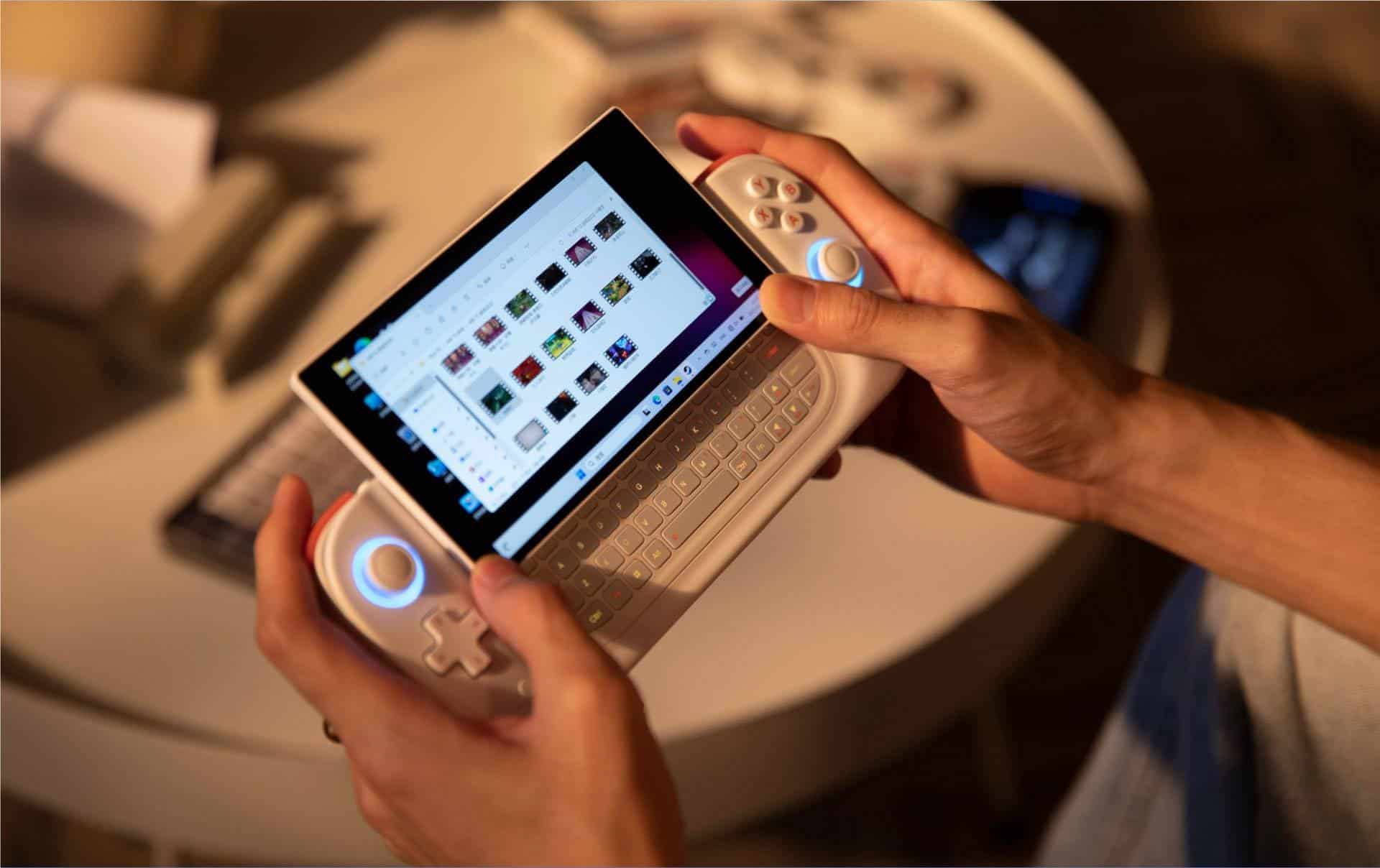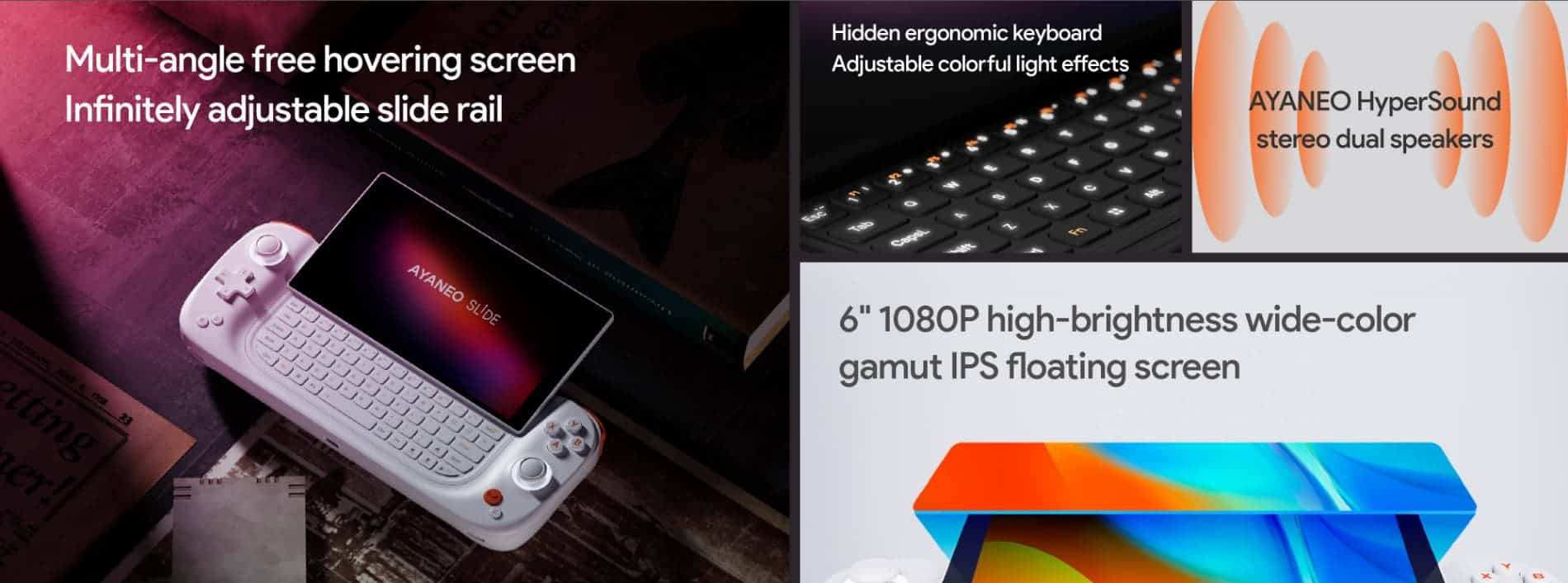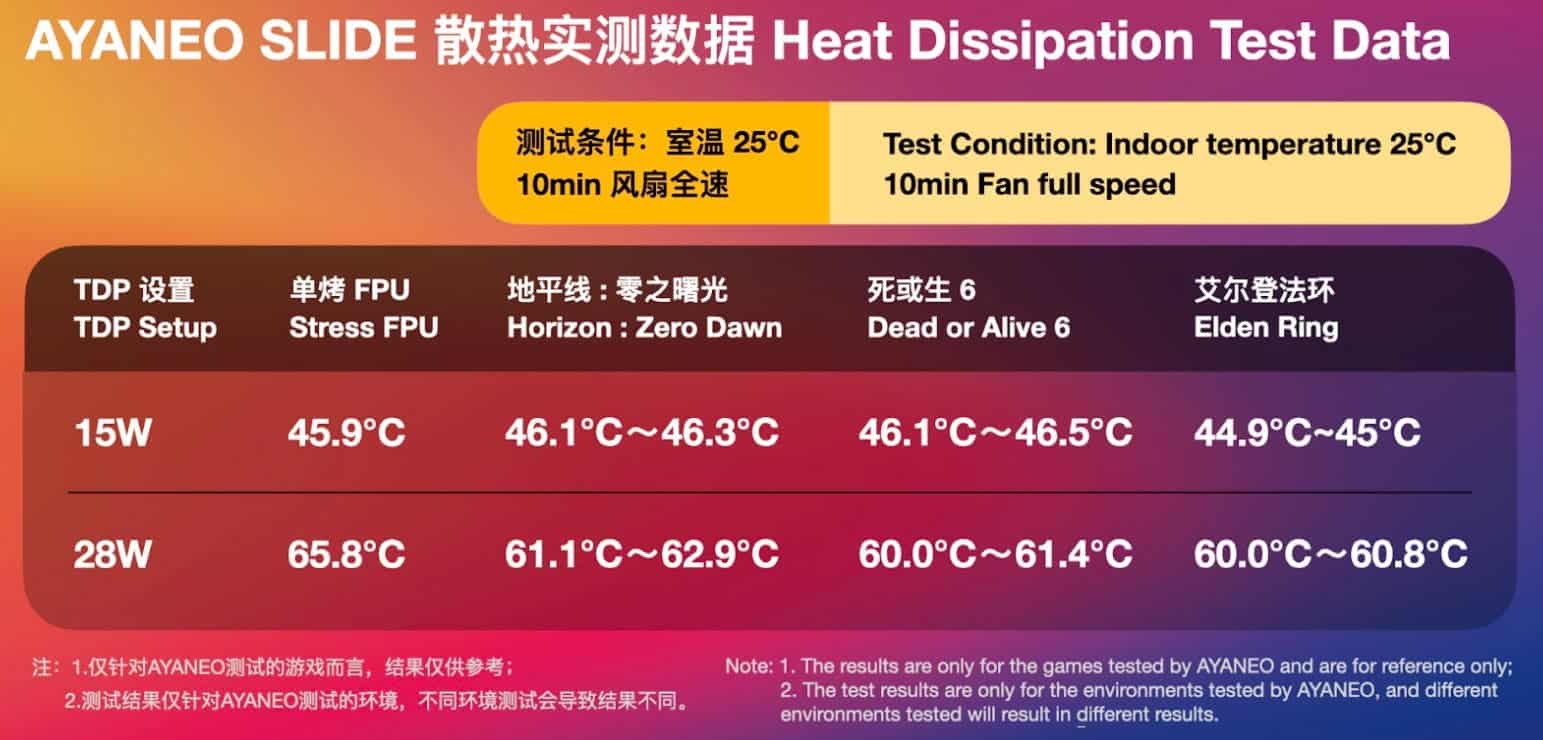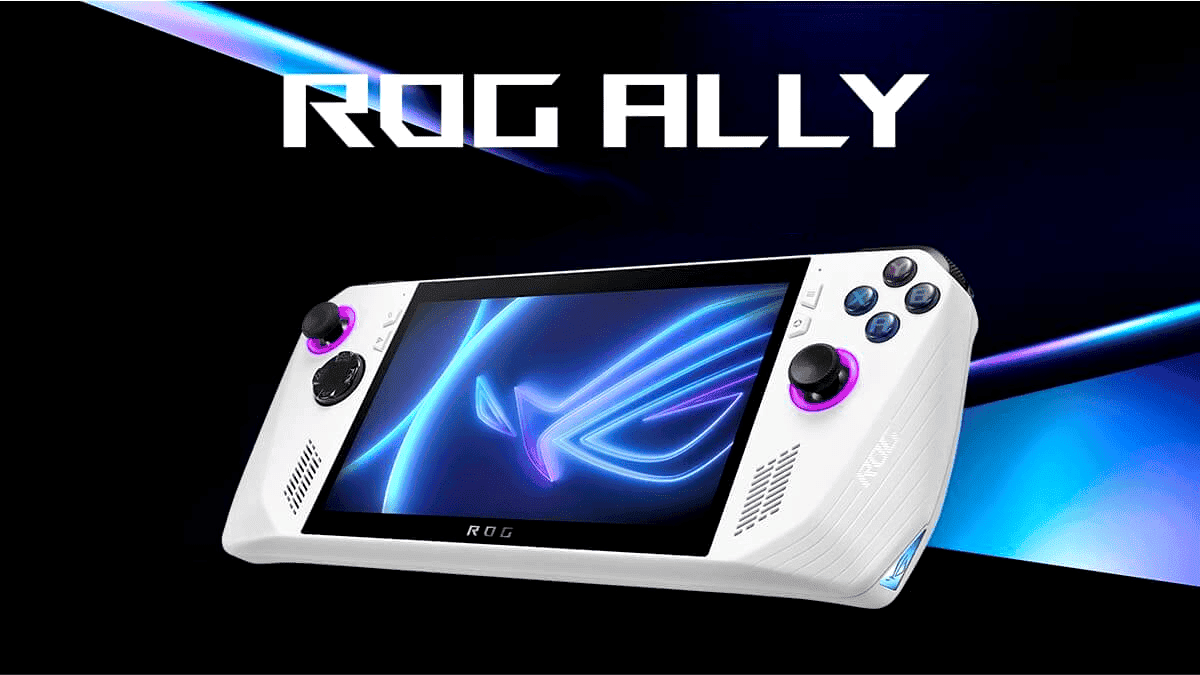Announced back in September of this year, Ayaneo Slide has now become official on Indiegogo. It’s currently available for pre-order with a starting price tag of US$704. At this price point, it’s going directly against the Lenovo Legion Go, Asus Rog Ally, and the newly launched Steam Deck OLED.
But the Ayaneo Slide isn’t just another handheld gaming device. Instead, it’s a full-fledged handheld desktop. Aside from powerful specs, the gaming device comes with a full keyboard, which makes it a proper pick as a laptop replacement.
However, the real question is, how do the specs of Ayaneo Slide compare against Steam Deck and other handhelds? Let’s take a deeper dive.
Main Highlights of the Ayaneo Slide
Like some of the other gaming handhelds in the market, the Ayaneo Slide is powered by AMD Phoenix mobile processor. To be precise, an AMD Ryzen 7 7840U powers the handheld. It’s an eight-core CPU with 16 threads. And as for the GPU, the processor features the integrated AMD Radeon 780M.
In terms of the design, the Ayaneo Slide features a PSP-like form factor. It features a 6-inch IPS screen that can deliver 400 NITs of brightness and boasts 120% sRGB gamut coverage. But what really sets this gaming handheld apart is the sliding factor.

As the name suggests, you can slide the Ayaneo Slide to reveal a fully-fledged QWERTY keyboard. Now, this isn’t the first time we’ve seen handheld devices with QWERTY keyboards entering the market. GPD has previously released multiple handhelds with the same feature.
However, the keyboard of the Ayaneo Slide has RGB backlighting, making it fully stick to the gaming aesthetics. And after sliding the screen, you can make it tilt anywhere between 0 to 30 degrees toward you, which will result in a comfortable gaming experience.
Of course, as the Slide is a gaming handheld, it also comes with D-Pad controls, a joystick, and other gaming controller buttons. And like the keyboard, the joysticks feature RGB lights.

Other specs of the Ayaneo Slide include a 46.2 Wh battery, up to 64 GB of RAM, up to 4TB of PCIe Gen4 storage, WiFi 6E, Bluetooth 5.2, and a 3+2 cooling system. Regarding this cooling system, Ayaneo says that it equips three 8 mm cooling fins.

Alongside that, it has a high-pressure turbine fan to keep the temperature under control. Ayaneo has shared the cooling performance of the Slide in different TDP setups running various AAA titles, which you can check out from the picture attached below.

How Does Ayaneo Slide Compare Against the Steam Deck?
The Ayaneo Slide is a more capable gaming handheld than the Steam Deck. It comes with the Ryzen 7840U APU, which has RDNA 3 graphics. This is the same chipset that’s featured on some of the other Ayaneo gaming handhelds. That includes the Ayaneo Air 1S, 2S, Kun, Geek, and others.

To compare, the Steam Deck features a custom AMD chipset with a Zen 2 + RDNA 2 configuration. So, the Ayaneo Slide will offer better overall gaming performance. But in terms of pricing, the Steam Deck is still one of the value-packed gaming handhelds out there.
What About Asus Rog Ally and Lenovo Legion Go?
In terms of specs, the Ayaneo Slide and Asus Rog Ally are very similar to each other. The AMD Z1 Extreme chipset found in the Rog Ally is based on Zen 4 architecture, the same as the Ryzen 7840 APU. Rog Ally also comes with the same RDNA 3 graphics as the APU in the new gaming handheld.
The story is pretty much similar when you consider the Legion Go. So, among these three gaming handhelds, it’s all about the design. Asus Rog Ally has a traditional gaming handheld design like the Steam Deck. The Lenovo Legion Go takes a unique take by inheriting some of the features Nintendo Switch is known for. And Ayaneo Slide, on the other hand, offers a full-fledged QWERTY keyboard.

All these three gaming handhelds are based on Windows. However, it’s possible to run other operating systems on them. Yes, there are some differences in the other specs. For example, the screen on the Ayaneo Slide is 6-inch in size. On the other hand, the Lenovo Legion Go comes with an 8.8-inch screen, while the Asus Rog Ally has a 7-inch screen size.
Pricing and Availability of Ayaneo Slide
On Indiegogo, the Ayaneo Slide is currently in the pre-order stage with discounted pricing. The 16GB/512GB model is US$704, 32GB/512GB is US$805, 32GB/2TB is US$966, and 64GB/4TB is US$1308. After the pre-order phase, the prices for these variants will be US$905, US$1006, US$1167, and US$1610, respectively.

To compare, the Lenovo Legion Go starts at US$700, while the Asus Rog Ally with Ryzen Z1 Extreme starting price is US$699. Ayaneo says that the Slide gaming handheld will start shipping in mid-December of this year. It will be interesting to see how much value the handheld offers afterward, as after that, it will be possible to make an in-depth comparison against its competitors.





